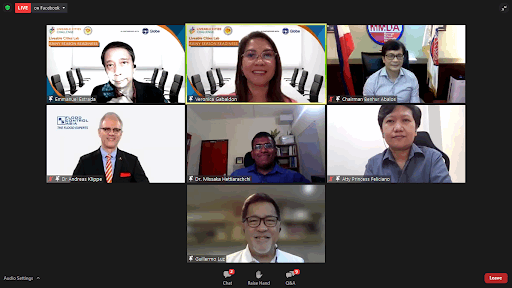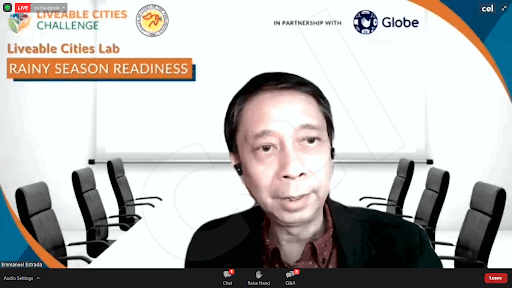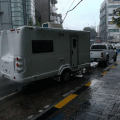Destructive typhoons and other natural disasters are often synonymous with the onset of the rainy season in the Philippines. Given this, Globe commits to providing continued connectivity support to affected communities and residents.

This was the assurance made by Globe Senior Vice-President for Technology Strategy & Service Innovation Emmanuel Estrada during the Liveable Cities Labs: Rainy Season Readiness webinar.The discussion tackled flood preparedness, risk mitigation, and resilient infrastructure.
Estrada pointed out that preparedness and business continuity are at the core of Globe’s network’s life cycle – from site preparation and construction, operation and maintenance, all the way to upgrades and expansion.

“We need to consider gale-force winds from typhoons, flooding, landslides, and even operating without power. Our network is designed to withstand and survive all these risks because we know that connectivity is vital for disaster response and recovery. It is our responsibility to provide that public service and restore damaged sites at the soonest possible time,” he said.
The Philippines is prone to climate-related hazards, given its geography and location. An average of 24 typhoons hit the country every year, 70 percent of which enter the Philippine Area of Responsibility between July and October. According to the United Nations, the country is fourth globally with the highest number of disaster-related events.
Since Typhoon Yolanda, the government has implemented stricter requirements that all major installations can withstand super typhoon levels of up to 260 to 340 kilometers per hour and 7.0 intensity earthquake based on the National Structural Code of the Philippines.
Recognizing this, Globe uses Geohazard mapping for its sites so it can anticipate natural hazards and disasters. Many of its cell sites and critical infrastructures identified to be in flood-prone areas are designed and built on elevated platforms to protect equipment during flooding. Its cell towers facing the Pacific Ocean are designed to withstand winds of over 300 kilometers per hour. The company also collaborates with communities to get more information on hazards in a given locality.

Currently, the company is redesigning and retrofitting towers along the typhoon path, fortifying essential sites with “last to be disrupted, first to recover” capabilities, and deploying higher capacity gensets to address prolonged power outages.
At the heart of the company’s business continuity plans is the Globe Service Command Center (GSCC), which proactively monitors 24/7 conditions that can rapidly escalate into emergencies or disasters. GSCC’s real-time monitoring and response triggers the activation of the Crisis Management Committee, the mobilization of Disaster Response Teams, and social action to help affected communities.
Learning from its own experiences in the field during disasters, Globe has developed several platforms that can be rapidly mobilized and enable communities to recover faster. These include cell sites on wheels, Tower on Wheels, satellite equipment, Network in Box, mobile command centers, and gensets pre-loaded on trucks.
As part of its disaster response and recovery efforts, Globe deploys Dyip Sagip that offers free charging, free calls, and free wi-fi to hard-hit communities. With geo-tagging, the company can provide free mobile services to customers in the impacted area. Through Globe Reward and GCash, Globe can quickly raise funds for donation to partner non-government organizations (NGOs) such as the Philippine Red Cross.
“Our business continuity plans here at Globe are akin to Noah’s Ark. People always ask us why we are building so many redundancies into our operations, but we realize that these risks are real, especially with the effects of climate change. We really need to evolve our preparedness, we need to adapt to nature, and we need to protect ourselves and our families and ensure continuous service to the communities affected and to all our customers,” Estrada added.
The 2021 Liveable Cities Labs is presented by Liveable Cities Challenge Philippines and the League of Cities of the Philippines in partnership with Globe. These webinars aim to assist cities with knowledge and insights for designing better solutions for their communities.
Globe is committed to upholding 10 United Nations Global Compact Principles and 10 UN Sustainable Development Goals, among which is UN SDG No. 9 that highlights the roles of infrastructure and innovation as crucial drivers of economic growth and development.
To know more about Globe, visit www.globe.com.ph.






